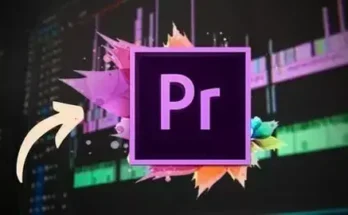P2P | 22 October 2019 | 2.88 GB
My mission when it comes to teaching you film scoring is to get you creating as quickly and easily as possible. We’re not studying notation, we’re not dwelling on theory, we’re just learning how to get your ideas out of your head and onto the screen!
The course is aimed towards beginners, so if you’re new to Logic Pro X or have never used it for film scoring before, there’s plenty for you to get stuck into. As well as technical things such as how to actually import your movie into the software, we also cover the creative aspects of film music composition too: from coming up with your initial idea, creating melodies, harmonising those melodies, and bringing your composition to life!
What will you learn:
How to setup Logic Pro X for Film Scoring
The equipment you’ll need to compose music for moving image
Creating melody and harmony
Recording & producing instruments
Mixing & mastering audio
Exporting & syncing music to picture
What I cover:
Film scoring equipment
Setting up Logic Pro X
Making musical decisions
Coming up with a concept
Choosing and editing instruments
Creating melodies and harmony
The full process of composing
Developing your composition
Adding synthesisers & sound design
Recording instruments
Improving MIDI samples
Mixing your audio
Mastering your track
Syncing your music to the visuals
Add Magic to a Movie by Creating Your Very Own Film Score
Regardless of your musical background, this course will show you how to improve your melody writing, develop more interesting harmony, and how to give your music compositions the extra details making them perfect for the silver screen.
Not only will you learn the creative process of film scoring, but also the technical aspects. From setting up Logic Pro X, through recording and producing instrument parts, right to mixing, mastering, and syncing your final piece.
Unlike traditional music composition courses, I focus on getting your ideas developed and recorded without the restrictions of traditional music theory.
Contents and Overview
As a beginner’s course, we start at the beginning: how to setup Logic Pro X including downloading the additional content, storing your samples securely, and activating advanced tools.
We then explore the creative side of film scoring: coming up with a concept, setting the various tempos and time signatures required of a project, creating melodies, harmonising those melodies, and then developing your ideas into a full composition. I also show you how to use synthesisers and creative audio processing to take your pieces to a new level.
The next section is all about producing your track: recording live instruments, improving your MIDI samples, making each instrument sound amazing before giving your piece its final polish in the mastering stage.
Finally, I show you how to actually sync your music with the movie, creating a final movie file ready to present to your friends, family, and the world!
By the end of the course you’ll be able to confidently compose original music for moving image.
What equipment do I need?
The only “essential” equipment is Logic Pro X (unless you’re only interested in the actual process/composition aspect). That said, you’ll find it much easier to compose if you also have a MIDI
keyboard.
Who’s my teacher?
I’ve worked professionally as a film composer for over 10 years and previously taught film music production and composition at University level. My music has won international awards, and films that I’ve worked have had red carpet premieres in London and Hollywood, LA.
Nowadays I devote my life to helping people get into composing for media through my website, courses, and podcast under the brand: soundtrack.academy.
I’m always here to answer any questions and to help you in your journey to becoming a better composer!
See you in the course!
[toggle title=”Home page”]https://tinyurl.com/y4shbehq[/toggle]

http://alfalink.to/99291d4ae2f5f87ea895
Please REPORT in Comment Broken Links




